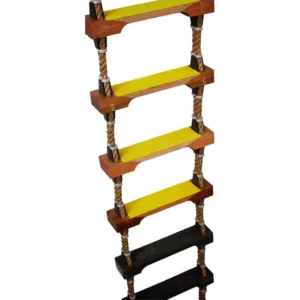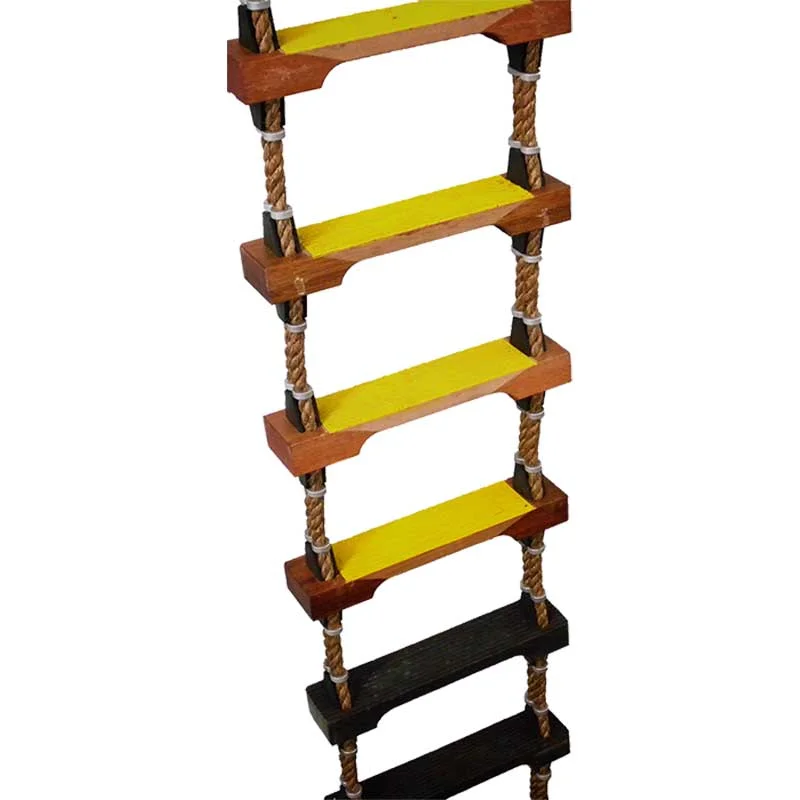Embarkation ladders, those trusty companions of maritime and aviation adventures, have been our silent partners in exploration. Let’s unravel their secrets, shall we?
Embarkation Ladders: Bridging Worlds
 1. Nautical Necessities
1. Nautical Necessities
Ships—majestic vessels that traverse oceans and rivers—have their own rituals. When it’s time to step ashore or welcome new crew members, embarkation ladders come into play. These ladders, often attached to the ship’s side, allow sailors, passengers, and even the occasional pirate (just kidding!) to transition between ship and shore.
- Quayside Ladders: Picture this—a bustling port, salty air, and a ladder dangling from the ship’s railing. Quayside ladders connect ships to docks, allowing crew members to embark or disembark with ease. They’re like the maritime version of a red carpet.
- Mechanized Marvels: In our modern era, efficiency reigns supreme. Ships now boast mechanized systems—gangways, accommodation ladders, and passerelles—that extend gracefully toward the dock. These motorized wonders make life smoother for passengers and crew alike.
2. Taking Flight
Now, let’s soar into the skies. Planes, those magnificent birds of steel, also have their own boarding rituals. When passengers step onto the tarmac, they encounter various pathways to their airborne adventure:
- Aerobridges: Imagine a futuristic tunnel connecting the plane’s door to the terminal—a seamless transition from land to cabin. Aerobridges, those telescopic walkways, make boarding feel like stepping into a sci-fi novel.
- Portable Elevators: For smaller aircraft or remote airstrips, portable elevators come to the rescue. They lift passengers from the ground to the plane’s door, like a gentle handshake between Earth and sky.
- Taxi Bay Stairways: Sometimes, planes park away from the terminal. In such cases, good old stairways roll up to the plane’s door. Passengers descend, feeling a mix of anticipation and wanderlust.
3. The Magic of Arrival and Departure
Whether it’s the rhythmic sway of a ship’s ladder or the anticipation of stepping onto a plane, embarkation ladders hold stories. They’ve witnessed tearful farewells, joyous reunions, and countless adventures.
Embarkation Ladders: These foldable ladders are strategically positioned along the hull side of ships, particularly on the main or exposed deck. Their purpose is twofold: enabling people to embark onto the vessel and facilitating their safe disembarkation when needed. Imagine them as the maritime equivalent of a well-placed ladder for emergency situations at sea.
Here are some key points about embarkation ladders:
- Design and Purpose:
- Embarkation ladders are designed to be sturdy and reliable. They follow simple rope ladder principles but incorporate modifications for increased strength.
- When emergencies arise—whether it’s transferring to a rescue boat, survival craft, or another vessel—these ladders provide a lifeline for crew members and passengers.
- Regulatory Framework:
- The SOLAS (Safety of Lives at Sea) framework governs the configuration, design, manufacture, and placement of embarkation ladders.
- Compliance with SOLAS ensures that these ladders meet stringent safety standards.
- Difference from Pilot Ladders:
- While embarkation ladders serve emergency purposes, pilot ladders are used under normal conditions.
- Crew members, engineers, or service personnel often use pilot ladders for routine inspections, maintenance, and repairs.
- Pilots—who guide large vessels through channels, harbors, and canals—also rely on pilot ladders for embarking and disembarking.
- Construction:
- Embarkation ladders are typically made of wood and manila rope.
- Unlike pilot ladders, which have spreaders (wider steps) for added strength, embarkation ladders maintain a simpler design.
Embarkation Ladders VS Pilot Ladders
Embarkation Ladders
- Purpose: Embarkation ladders serve as a means of safe access between a ship and a smaller vessel (such as a lifeboat) or between a ship and a dock.
- Usage:
- Embarking and Disembarking: These ladders are primarily used for embarking (boarding) and disembarking (leaving) the ship.
- Emergency Situations: In emergency scenarios (such as abandoning ship), embarkation ladders provide a safe exit route.
- Design and Features:
- Rope Ladders: They are often made of ropes or webbing material, which allows them to be flexible and easy to deploy.
- Stability: Embarkation ladders are stable and secure, ensuring safe passage.
- Attachment Points: They attach to the ship’s side or railings.
- Common Locations: You’ll find embarkation ladders near lifeboats, rescue boats, and designated embarkation points on the ship.
Pilot Ladders
- Purpose: Designers create pilot ladders specifically for transferring marine pilots (experienced navigators) between their pilot boats and larger vessels (such as cargo ships, tankers, or cruise ships).
- Usage:
- Navigational Assistance: Pilots use these ladders to board ships and provide navigational guidance during critical maneuvers (e.g., entering or leaving ports, navigating narrow channels).
- Safety and Efficiency: Pilot ladders ensure a safe and efficient transfer process.
- Design and Features:
- Rungs and Steps: Pilot ladders have rigid wooden or metal rungs/steps, making them stable and easy to climb.
- Length and Angle: They are typically 9 to 10 meters long and hang at a 60° angle from the ship’s side.
- Embarkation Arrangement: Pilot ladders are rigged with a combination of spreader bars, pilot ladder ropes, and pilot ladder magnets.
- Regulations: International Maritime Organization (IMO) regulations govern the design, installation, and use of pilot ladders.
- Safety: Proper maintenance and inspection are crucial to ensure safety during pilot transfers.
Pilot ladders and embarkation ladders share similarities in design and construction, but they serve distinct purposes. The key difference lies in the presence of spreaders. Pilot ladders feature larger, laterally elongated steps with spreaders placed at specific intervals for added strength and to prevent twisting. In contrast, embarkation ladders lack spreaders, making them easier to stow.
During emergencies, embarkation ladders facilitate safe boarding and disembarking between vessels. Typically made of wood, they rely on a robust rope framework. The last few steps may incorporate rubber or synthetic materials. These foldable ladders extend from the deck to the waterline, strategically stored near their intended use areas.
SOLAS regulations govern their construction, emphasizing critical aspects:
- Scope: Applicable to vessels where the distance from the average waterline to the common or main deck exceeds 4.5 meters in lightweight conditions.
- Materials: Suspension frameworks use manila rope or high-strength Dacron polyester standard rope, often with a polypropylene core. These modern materials surpass traditional organic coconut or tree-based ropes in strength and durability.
- Strength Requirements: The minimum yield or breaking strength of ladder components should be at least 24 KN. Rope thickness varies based on ship size but typically remains above 60 mm (6 cm).
- Continuous Steps: Embarkation ladders feature continuous steps without joints. Standard hardwood or synthetic materials ensure durability.
If you have any specific requirements or need further insights, feel free to discuss them with me. I’m here to assist we invite you to connect with us Explore the unparalleled expertise and quality solutions that Shabbir Enterprises brings to the table, ensuring your material handling equipment’s needs are met with precision and reliability.

